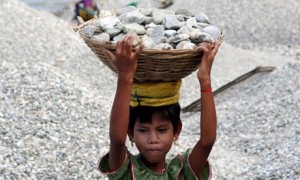Major provisions of the bill:
The Child Labour (Prohibition and Regulation) Act, 1986, prohibits the employment of children under the age of 14 in 83 occupations and processes, and “regulates the conditions of work of children” in all others.
The proposed CLPR Amendment Bill, 2012, however, bans all child labour, irrespective of sector, up to age 14.
The idea is to align the law with the RTE Act which makes it obligatory for the state to ensure free and compulsory education to children from 6-14.
Also, the proposed amendment prohibits the employment of adolescents aged 14-18 years in hazardous occupations.
The jail term for breaking the law has been proposed to be increased to 6 months-2 years (from the 3 months-1 year earlier), and the fine to Rs 20,000- 50,000 (from the Rs 10,000-Rs 20,000 earlier.
Major criticisms:
The proposed changes, however, allow children to work in family enterprises after school hours, or during school holidays, which, according to the government, is important given India’s socio-economic realities.
Also, the list of hazardous activities has been slashed from 83 to 3 — mining, inflammable substances, and hazardous processes under the Factories Act, 1948.
In effect, the critics argue that, it therefore, allows children to be employed in all kinds of unsafe processes. The concern raised is that under the garb of family enterprises, children can be made to work in brick kilns, slaughterhouses, carpet, zari and bidi units, mica or diamond cutting, handling e-waste, scavenging or as domestic help.


